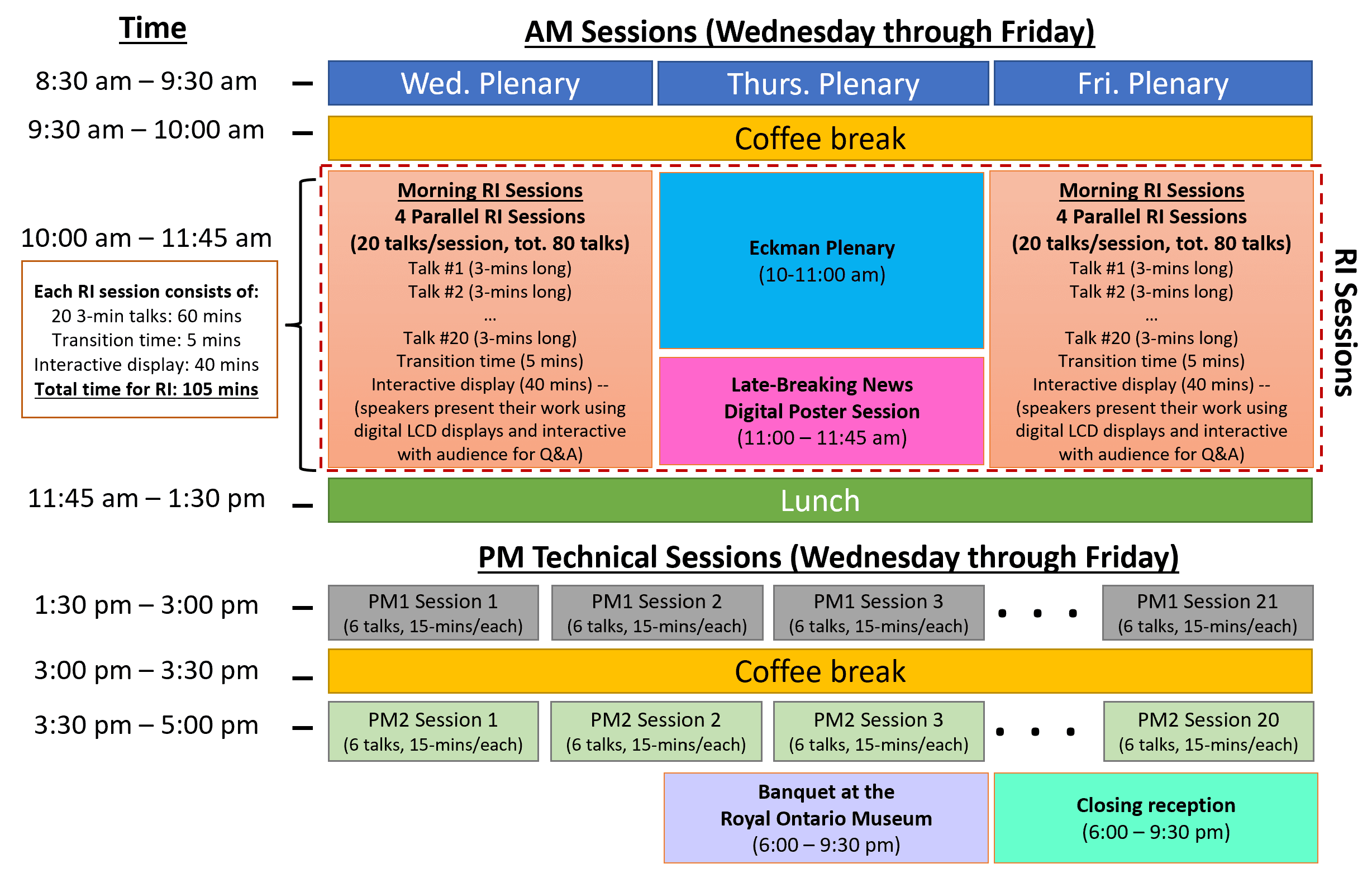Overview
Authors of contributed and invited papers will present their work in one of the two possible oral presentation formats:
- Morning sessions (Wednesday and Friday): Rapid-Interactive (RI) sessions – back-to-back 3-minute talks, followed by a 40-minute digital display where authors present additional details of their work through provided LCD displays (see details in Item #1 below).
- Afternoon sessions (Wednesday, Thursday, and Friday: Traditional 15-minute oral presentation sessions (see details in Item #2 below).
Please refer to the Conference Program to see which session you are presenting in and the type of oral presentation.
Authors of Late-Breaking News Posters will present their work through provided LCD displays (see details in Item #3 below).
Below is the basic program layout for each day at the conference:

1. Rapid-Interactive Sessions (Wednesday and Friday Morning): Details and Tips
More specifically, each morning RI session consists of the following:
- back-to-back, 20 three-minute oral presentations, no Q&A, followed by an 5-min transition time
- 40-minute interactive display where all authors across all four RI sessions will show more details of their work via digital LCD displays and interact with audience and answer questions (similar to a traditional poster presentation format). All displays will occur in the large ballroom.
The RI sessions are intended to provide the authors an opportunity to present their work to a larger audience, enhance the interaction for conference participants, and encourage attendees to discuss with more authors during the interactive presentation that takes place after all 3-minute oral presentations.
